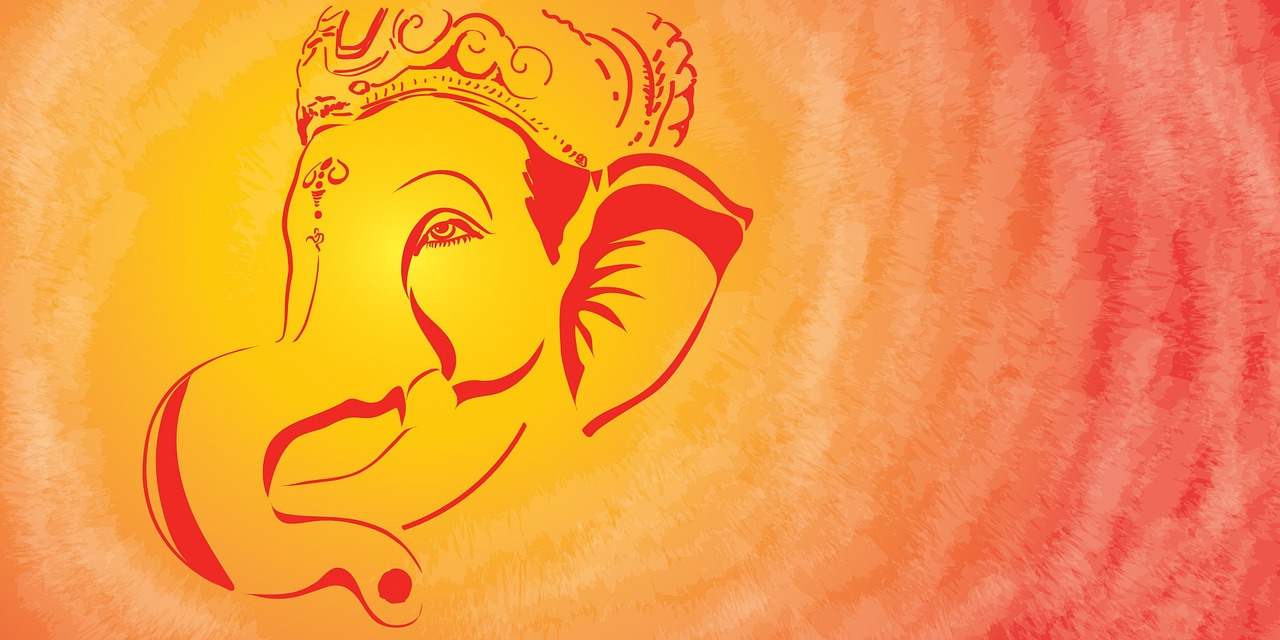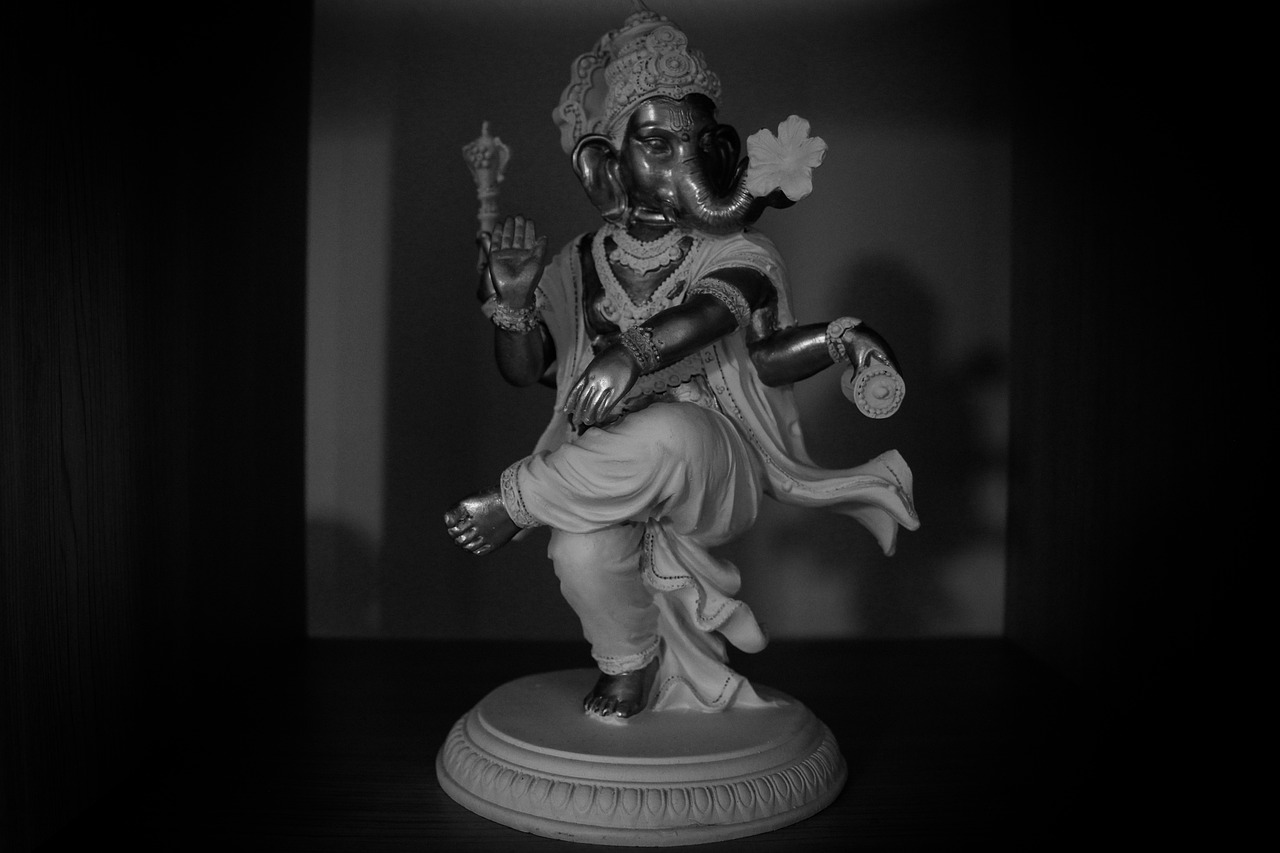Imagine a world where elephants are revered for their wisdom, strength, and ability to overcome any obstacle in their path. Now, imagine a god, not just any god, but the Hindu god of obstacles, Ganesha, whose tales are intertwined with fascinating legends and mythical stories. From his unique appearance with an elephant’s head atop a human body to his humble beginnings, Ganesha’s tales are as enchanting as they are awe-inspiring. Join us as we delve into the captivating myths and legends that surround the beloved deity, Ganesha.

Table of Contents
The Birth and Appearance of Ganesha
The birth of Ganesha
Ganesha, the Hindu god of obstacles, is said to have an intriguing and unique origin story. According to Hindu mythology, Ganesha was created by the goddess Parvati, who carefully molded him out of sandalwood paste. Parvati, the consort of Lord Shiva, crafted Ganesha as a playmate and protector.
Lord Shiva beheading Ganesha
In certain versions of the tale, Ganesha’s birth sparked a conflict. Lord Shiva, who had been away at the time, returned to find a young boy standing guard outside Parvati’s private quarters. Unaware that Ganesha was his own son, Shiva, overcome with anger, engaged in a fierce battle with the boy. As the battle escalated, Lord Shiva eventually beheaded Ganesha.
The elephant head replacement
Upon realizing that he had mistakenly killed his own son, Lord Shiva was filled with sorrow. In order to rectify the situation, he ordered his followers to bring the head of the first creature they encountered. Astonishingly, they came back with the head of an elephant, which Shiva then successfully affixed onto Ganesha’s body, restoring his life. This transformation gave Ganesha his distinctive appearance, with the head of an elephant and the body of a human.
The Role and Symbolism of Ganesha
The god of obstacles
Ganesha is widely revered as the god of obstacles and is often invoked to overcome challenges and hurdles. As the deity responsible for clearing the path ahead, devotees turn to Ganesha for help in navigating through life’s difficulties. Ganesha’s presence brings a sense of assurance and guidance during times of struggle.
Remover of obstacles
One of Ganesha’s most revered attributes is his ability to eliminate obstacles from the lives of his devotees. Hindu scriptures describe Ganesha as possessing immense intelligence and wisdom, which he utilizes to unravel the most complex problems. By seeking his blessings and invoking his name, Individuals believe that Ganesha provides the strength and insight required to overcome any hindrances they may face.
Patron of arts and sciences
Ganesha is not only associated with the realm of obstacles but is also considered the patron deity of arts and sciences. Artists, writers, musicians, and scholars alike pay homage to Ganesha, seeking his inspiration and blessings to excel in their respective creative and intellectual pursuits. Ganesha’s association with arts and sciences symbolizes the harmonious fusion of intelligence, creativity, and wisdom.
Symbolism of Ganesha’s appearance
Ganesha’s unique appearance holds deep symbolism. His elephant head represents wisdom, intellect, and discrimination, while his large ears symbolize the importance of listening attentively. The distinct elephant trunk signifies versatility and adaptability, allowing Ganesha to maneuver through any situation with ease. As for his human body, it signifies that divinity resides within every human being, transcending physical forms. Ganesha’s appearance serves as a reminder to embrace the intellect, listen carefully, and recognize the divine within us all.
Ganesha and the Mango
Ganesha’s love for food
Ganesha’s love for food is another tale associated with this beloved deity. Known as a fond connoisseur of delicious treats, Ganesha’s appetite is renowned throughout Hindu mythology. His fondness for good food is often depicted in various stories, giving him a relatable and endearing quality.
The contest with his brother
One particular tale recounts a contest between Ganesha and his younger brother, Lord Kartikeya. The challenge posed to both brothers was to circumnavigate the universe three times. While Kartikeya quickly embarked on his peacock, confident in his swiftness, Ganesha adopted a different approach. Instead of physically racing, Ganesha simply encircled his parents, Lord Shiva and Parvati, three times, considering them to be the universe in themselves.
The world’s obstruction
As the wise elder brother, Ganesha knew his true purpose wasn’t to simply win the race but to teach the world a valuable lesson. By circumnavigating his parents, Ganesha symbolically emphasized the importance of respecting one’s parents and recognizing their divinity within. This story highlights Ganesha’s wisdom in prioritizing values and virtues over mere physical achievements.
Ganesha and the Divine Serpent
The fight with the divine serpent
A captivating tale recounts Ganesha’s encounter with a divine serpent. As Ganesha was enjoying a sumptuous feast, a serpent named Vasuki, who happened to be the king of all snakes, interrupted the festivities. Enraged by this unexpected interruption, Ganesha engaged in a fierce battle with the serpent.
The tying of the serpent as a belt
In an astonishing display of power, Ganesha swiftly overpowered Vasuki and skillfully subdued him. Rather than causing harm, Ganesha wisely decided to utilize the serpent’s energy to his advantage. He wrapped Vasuki around his waist, fashioning a sacred belt known as the Nagapasha. This belt served as a symbol of control over desires, representing Ganesha’s ability to conquer the ego and maintain inner harmony.

Ganesha and Kubera’s Pride
The story of Kubera and his pride
Kubera, the god of wealth, once became overly consumed by his own material riches and succumbed to a dangerous level of pride. He invited Lord Shiva and Goddess Parvati to his luxurious palace, intending to display his opulence. Observing Kubera’s arrogance, Lord Shiva decided to teach him a humbling lesson.
Ganesha’s role in humbling Kubera
To humble Kubera, Lord Shiva requested Ganesha to visit Kubera’s palace with the condition that he should be greeted with utmost respect. However, Kubera, blinded by his pride, failed to acknowledge Ganesha with the reverence he deserved. Ganesha, in response, caused a divine rat to enter the palace, destroying everything in its path. Witnessing the destruction, Kubera realized the error of his ways and sought forgiveness. This tale serves as a reminder of the importance of humility and the transient nature of material wealth.
Ganesha and the Moon
The moon and Ganesha’s displeasure
According to Hindu mythology, the moon found itself in the midst of a peculiar situation. As the story goes, the moon once ridiculed Ganesha for his rotund shape, enraging the god of obstacles. Ganesha, in his wrath, decided to teach the moon a lesson it would never forget.
The appearance of the moon
Ganesha cursed the moon, inflicting it with a disorder known as “Kshaya” or “wasting disease.” This disease caused the moon to gradually diminish in size, eventually leading to its complete disappearance from the night sky. The moon, realizing its mistake and pleading for forgiveness, approached Ganesha, seeking a solution to its affliction.
The moon’s curse and its resolution
In his benevolence, Ganesha reduced the moon’s curse, allowing it to wax and wane in cycles. Hence, even today, the moon undergoes a monthly cycle, transitioning from full moon to new moon. This tale serves as a reminder of Ganesha’s wisdom, compassion, and the significance of treating all beings with respect and humility.

Ganesha and the Broken Tusk
The broken tusk incident
One prominent aspect of Ganesha’s appearance lies in his broken tusk. According to legend, during the creation of the sacred Hindu text, the Mahabharata, Sage Vyasa approached Ganesha to be the scribe. Intrigued by this request, Ganesha accepted but proposed a condition – Vyasa must narrate the entire epic without pause, and Ganesha would only write if he fully comprehended what was being said.
The significance of Ganesha’s broken tusk
As Sage Vyasa began reciting the epic, Ganesha realized the enormity of the task. In order to prevent any disruptions in the narration, Ganesha broke off a piece of his own tusk and used it as a quill to continue transcribing the story. This act demonstrated Ganesha’s commitment, wisdom, and willingness to sacrifice a part of himself for the greater good.
Ganesha and the Battle of Lanka
Ganesha’s role in the Ramayana
The great Hindu epic, the Ramayana, narrates the story of Lord Rama’s battle against the demon king, Ravana. During this epic battle, Ganesha played a significant role. He became a vital ally to Lord Rama and bestowed his divine blessings upon him.
Lifting the entire Lanka
One remarkable incident involving Ganesha occurred when Lord Rama’s loyal monkey ally, Hanuman, joined forces with Ganesha. Hanuman, with the assistance of countless monkeys, built a bridge to cross the vast ocean and reach Lanka, Ravana’s kingdom. During this time, Ganesha took the form of a huge elephant and magnificently lifted the entire city of Lanka, ensuring a safe passage for Lord Rama and his army.
The end of the battle
Ganesha’s intervention played a crucial role in aiding Lord Rama’s victory over Ravana and the eventual rescue of his beloved wife, Sita. His presence throughout this epic battle exemplifies his role as a divine guide and protector, offering strength and support during times of adversity.
Ganesha and the Cat
The story of Ganesha and the cat
A heartwarming tale involves Ganesha and a cat. One day, Ganesha’s trusty vehicle, the mouse, accidentally trampled over a cat. Deeply moved by the cat’s distress, Ganesha graciously healed her wounds and offered her a place by his side.
The lesson of inclusivity
This story represents Ganesha’s message of inclusivity and the transcendence of differences. Ganesha showcased his compassion and taught that all beings, regardless of their backgrounds, should be treated with kindness and empathy. The story of Ganesha and the cat serves as a reminder of the importance of embracing diversity and fostering a harmonious existence.
Ganesha and Sage Vyasa
The encounter with Sage Vyasa
During his immense spiritual journey, Ganesha once crossed paths with the revered sage, Vyasa. Sage Vyasa recognized Ganesha’s intellectual prowess and requested him to transcribe the Mahabharata, one of the most significant Hindu epics.
The challenge of writing the Mahabharata
As a condition for accepting the task, Ganesha proposed that Sage Vyasa narrate the epic without pausing. Acknowledging the intelligence and understanding of Ganesha, Sage Vyasa agreed to the condition.
The divine assistance
Ganesha listened attentively and flawlessly transcribed the Mahabharata, successfully capturing the essence and intricacies of the epic. His role as the scribe showcased his vast knowledge, unparalleled intelligence, and a profound understanding of the spiritual and philosophical depths of the Mahabharata.
In conclusion, the tales associated with the Hindu god of obstacles, Ganesha, reveal a rich tapestry of mythology, symbolism, and wisdom. From his intriguing birth and appearance to his diverse roles and experiences, Ganesha embodies the qualities of wisdom, compassion, and guidance. These stories serve not only as fascinating legends but also as valuable life lessons, inspiring individuals to overcome obstacles, exhibit humility, and embrace diversity. Ganesha’s significance transcends religious boundaries, reminding us that the pursuit of knowledge, the power of introspection, and the expression of kindness are universal virtues that can lead to a more harmonious and fulfilling existence.